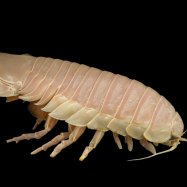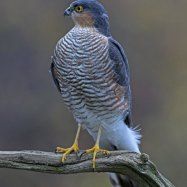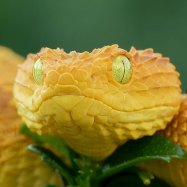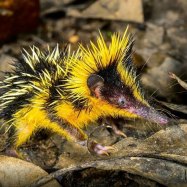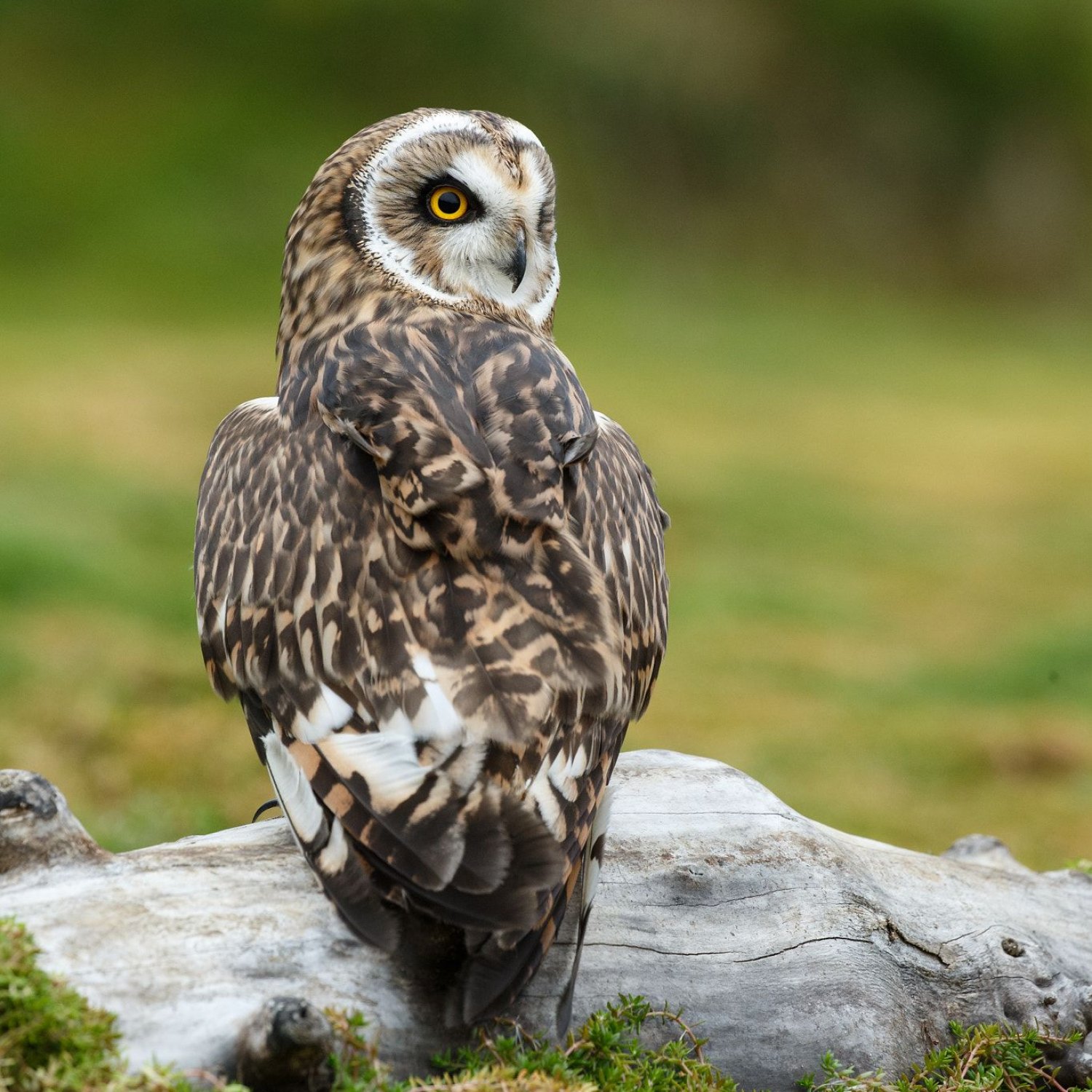
Short Eared Owl
13-17 inches
The Short Eared Owl, with a length of 13-17 inches, is a medium-sized owl found in various locations worldwide. Belonging to the Strigidae family, it is known for its distinctive short ear tufts and a round facial disk. These fascinating birds are skilled hunters and can often be seen flying low over open fields and marshes in search of prey. #Animals #Owls #Wildlife
Animal Details Summary:
Common Name: Short Eared Owl
Kingdom: Animalia
Habitat: Grasslands, marshes, tundra, and open areas
The Charming Short-Eared Owl: A Master of the Grasslands
As the sun sets on the grasslands, a silent predator emerges from its hiding place in the tall grass. Its mottled brown and buff feathers blend in perfectly with its surroundings, making it almost invisible to potential prey. This is the short-eared owl, a fascinating bird with captivating features and impressive abilities.An Introduction to the Short-Eared Owl
Scientifically known as Asio flammeus, the short-eared owl is a medium-sized bird belonging to the kingdom Animalia Short Eared Owl. Its distinct features and unique characteristics make it a member of the phylum Chordata, class Aves, and order Strigiformes. It is part of the Strigidae family, along with other owl species.The short-eared owl is highly adaptable and can be found throughout the world, making it one of the most widely distributed owl species. Its geographical distribution is not limited to a particular country, as it can be found in many countries across the globe. They are often found in open areas such as grasslands, marshes, tundra, and even on farmlands.
Appearance and Physical Features
One of the first things to catch our attention when looking at a short-eared owl is its beautiful coloration. Its feathers are mottled brown and buff, with dark streaks and bars. These features help it blend in with its surroundings, providing excellent camouflage while hunting or when trying to avoid predators.In terms of size, this owl species is medium-sized, with a length ranging from 13 to 17 inches Sequined Spider. Their wingspan is about three and a half feet, making them relatively large compared to other owl species. Interestingly, the name "short-eared" is a bit of a misnomer, as their ear tufts are not as prominent as other owl species. They can sometimes be seen as small tufts of feathers on the top of their head.
Habitat and Distribution
The short-eared owl is mostly found in open areas, such as grasslands, marshes, and tundra. However, they are highly adaptable and can also be found in farmlands, deserts, and even urban areas. Their versatile nature makes them prevalent and widespread, and they can be found in many countries across the globe.One of the reasons for their widespread distribution is their migratory nature. Short-eared owls are known to migrate over long distances, depending on the availability of food and suitable habitat. They cover vast areas in search of prey and often settle in different locations during different seasons.
Diet and Feeding Behavior
The short-eared owl is a carnivorous predator, and its diet mainly consists of small mammals, including rodents, voles, and shrews. They are also known to hunt insects, reptiles, and other birds, although these make up a smaller part of their diet. These owls usually hunt at dusk and dawn, using their extraordinary eyesight and hearing to locate prey.One of the most impressive feeding behaviors of the short-eared owl is its ability to hunt while flying. These birds are known to fly low over the grasslands, using their highly sensitive hearing to detect the rustling of prey in the grass. Once they spot their prey, they will fly down and snatch it with their sharp talons.
Fun Facts about the Short-Eared Owl
While the short-eared owl may seem like a regular owl species, it has some fascinating and lesser-known facts that make it truly unique. Here are a few fun facts about this bird:- Short-eared owls are silent hunters, with special feathers on their wings that muffle the sound of their flight, making them almost inaudible to their prey.
- Unlike many other owl species, short-eared owls are active during the day and can be seen flying around and hunting in broad daylight.
- These owls are monogamous and mate for life. They also have complex courtship rituals, including aerial displays and food offerings.
- In some regions, short-eared owls are known as "marsh owls" due to their preference for marshy habitats.
- Their heart-shaped facial disk helps them collect and funnel sound towards their ears, aiding their excellent hearing abilities.
Threats and Conservation Status
Despite their ability to thrive in a variety of habitats, short-eared owls face various threats in the wild. The loss and degradation of their grassland habitats due to human activities, including urbanization and agriculture, pose a significant threat to their survival.Another major obstacle is hunting and trapping, which is illegal in most countries but still prevalent in some regions. These birds are also known to be highly susceptible to pesticides and other environmental pollutants, which can affect their reproductive success and overall health.
Due to these threats, the short-eared owl is listed as a species of least concern on the IUCN Red List. This means that they are not currently facing a risk of extinction, but their population is declining, and conservation efforts are needed to ensure their long-term survival.
In Conclusion
The short-eared owl is a magnificent creature with unique features and remarkable abilities. Its camouflage, hunting techniques, and courtship rituals are just a few of the many reasons why this bird is fascinating to observe. However, they also face numerous threats, and it is essential to protect their habitats and preserve their populations for future generations.Whether you are a bird enthusiast, a nature lover, or simply someone who appreciates the diverse beauty of our planet, the short-eared owl is a species that is worth learning more about and admiring. Their charming appearance and captivating behaviors will surely leave a lasting impression and earn them a special place in our hearts.

Short Eared Owl
Animal Details Short Eared Owl - Scientific Name: Asio flammeus
- Category: Animals S
- Scientific Name: Asio flammeus
- Common Name: Short Eared Owl
- Kingdom: Animalia
- Phylum: Chordata
- Class: Aves
- Order: Strigiformes
- Family: Strigidae
- Habitat: Grasslands, marshes, tundra, and open areas
- Feeding Method: Carnivorous
- Geographical Distribution: Throughout the world
- Country of Origin: Unknown
- Location: Widespread
- Animal Coloration: Mottled brown and buff
- Body Shape: Medium-sized
- Length: 13-17 inches
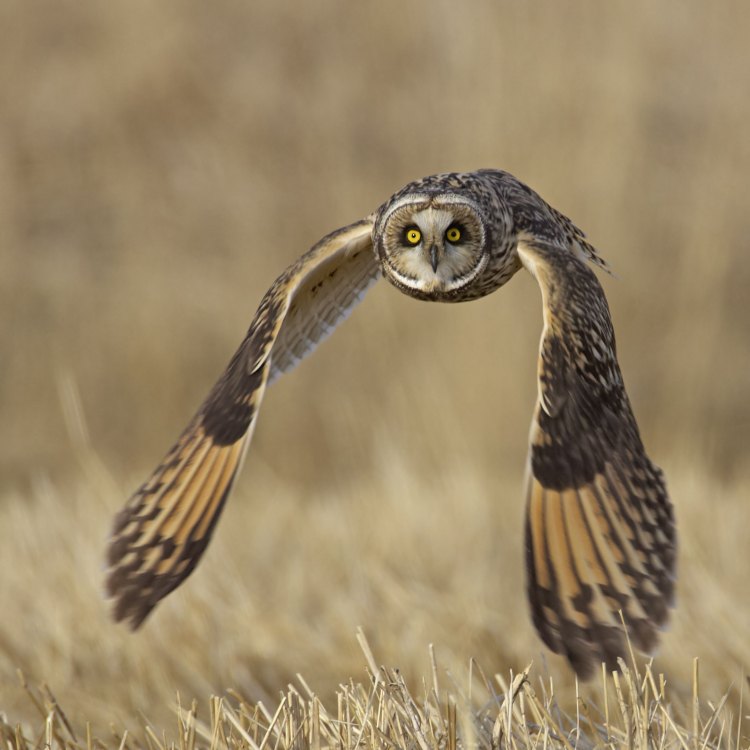
Short Eared Owl
- Adult Size: Medium-sized
- Average Lifespan: 4-5 years
- Reproduction: Egg-laying
- Reproductive Behavior: Mating pairs form during breeding season
- Sound or Call: Raspy bark-like call
- Migration Pattern: Migratory
- Social Groups: Solitary or loosely social
- Behavior: Active during the day
- Threats: Habitat loss, agricultural practices, and hunting
- Conservation Status: Least Concern
- Impact on Ecosystem: Controls rodent populations
- Human Use: No significant human use
- Distinctive Features: Large, yellow eyes and small ear tufts
- Interesting Facts: One of the most widely distributed owls in the world
- Predator: Large birds of prey, mammals
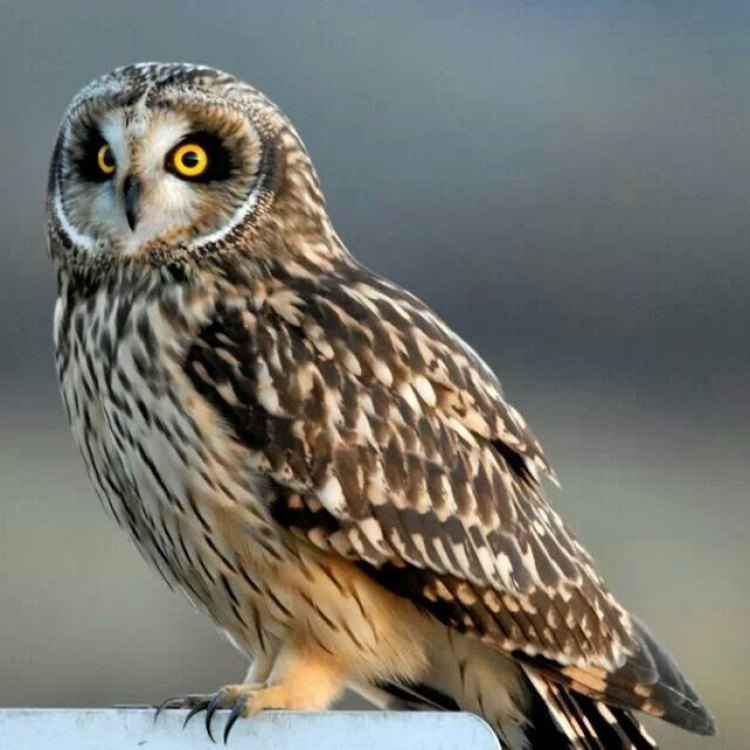
Asio flammeus
The Unique Features and Behaviors of the Short Eared Owl
The Short Eared Owl, also known as the "owl of the marshes," is a fascinating and elusive bird species that has intrigued humans for centuries. Its scientific name, Asio Flammeus, comes from the Latin words "flamma" meaning flame, and "asio" meaning horned owl, referring to its small ear tufts. This medium-sized owl inhabits open grasslands, meadows, and marshes, and is known for its distinctive features and interesting behaviors. In this article, we will delve into the world of the Short Eared Owl and discover what makes it such an exceptional and unique creature PeaceOfAnimals.Com.The Adult Size and Average Lifespan
The Short Eared Owl is a medium-sized bird, with a wingspan of 95-110 cm and a length of 33-43 cm. It is comparable in size to a crow, but its slender body and long wings give it a graceful appearance. Its feathers are mostly mottled brown and buff, with darker streaks on the back and wings, and a pale underbelly. Instead of the typical round facial disk seen in most owl species, the Short Eared Owl has a flat face, giving it a distinct and striking appearance.On average, these owls live for 4-5 years in the wild. However, some individuals have been recorded to live up to 10 years. A study conducted by the Hawk and Owl Trust in the United Kingdom found that the oldest Short Eared Owl in their study was a female who was 8 years and 11 months old.
Reproduction and Reproductive Behavior
Short Eared Owls, like most owl species, are egg-layers. The breeding season for these birds varies depending on their location and climate Simbakubwa. In some areas, it can start as early as February, while in others, it may not start until June. During the breeding season, males and females form mating pairs, and the female lays a clutch of 3-9 eggs. The incubation period lasts for about 25 days, and the male and female both take turns sitting on the eggs.One interesting fact about Short Eared Owls is that they do not build nests. Instead, they lay their eggs on the ground, usually in a shallow depression or on a clump of grass or vegetation. This behavior is known as "scraping."
Sound or Call
If you happen to hear a raspy bark-like call while walking through open grasslands, chances are you are near a Short Eared Owl. This distinctive call is often heard during the breeding season and is used to attract a mate or defend their territory.Aside from this call, Short Eared Owls are relatively quiet compared to other owl species. They typically do not hoot or screech like other owls, making their vocalizations even more intriguing and unique.
Migration Pattern and Social Groups
Short Eared Owls are migratory birds, meaning they travel long distances during certain times of the year in search of food and suitable breeding grounds. In North America, they can be found throughout the year in the northern parts of the continent, but during the winter, they migrate down to the southern United States and parts of Mexico. In Europe and Asia, they also migrate to warmer climates during the winter.These owls are typically solitary birds, but during the breeding season, they may form loosely social groups consisting of a male and a female, or a small family with their offspring. However, they are not known to be highly social creatures and prefer to hunt and roost alone.
Behavior
One of the most remarkable things about Short Eared Owls is that they are active during the day, unlike most owls that are nocturnal. They are most active during dawn and dusk, known as crepuscular activity, but can also be seen hunting during the day. This behavior sets them apart from other owl species and has made them a favorite among birdwatchers.During the day, Short Eared Owls can be seen perching on the ground or on low branches, intently scanning their surroundings for prey. They have excellent vision and can spot their prey, mainly small mammals like mice, voles, and shrews, from a distance. They then swoop down silently and catch their prey with their sharp talons.
Threats and Conservation Status
Like many bird species, Short Eared Owls face threats to their survival. Habitat loss due to urbanization and agricultural practices is a significant concern, as these birds rely on open grasslands to hunt and breed. The use of pesticides in agricultural areas may also affect their food supply, ultimately impacting their reproductive success.Another threat to Short Eared Owls is hunting. They are often mistakenly killed by hunters who mistake them for other species, such as the larger and more common Barn Owl. Additionally, some cultures believe that owls bring bad luck and may harm them intentionally.
Despite these threats, the Short Eared Owl is currently listed as Least Concern on the IUCN Red List of Threatened Species. However, measures must be taken to protect their habitats and educate the public about the importance of these birds to ensure their continued survival.
Impact on the Ecosystem
Short Eared Owls may not have a significant impact on humans, but they play a vital role in controlling rodent populations in the areas they inhabit. As mentioned earlier, they primarily feed on small mammals, which can sometimes be pests for farmers and landowners. By keeping these populations under control, the Short Eared Owl helps maintain a healthy balance in the ecosystem.Human Use
Unlike other owl species, Short Eared Owls do not have any significant use by humans. They are not commonly kept as pets or used for falconry, and their feathers are not used in traditional medicine or for any other purposes. These birds are primarily left alone in their natural habitats, which makes them even more elusive and intriguing to observe.Distinctive Features
One of the most notable and distinctive features of the Short Eared Owl is its large, bright yellow eyes. These mesmerizing eyes not only add to their striking appearance but also help them see well in low light conditions, allowing them to hunt effectively during dawn and dusk.Another feature that sets the Short Eared Owl apart from other owl species is its small ear tufts. These "flames" on either side of its head are used to communicate with other birds during the breeding season and enhance their overall appearance. While not as prominent as the ear tufts seen in other owl species, they add to their unique charm.
Interesting Facts
The Short Eared Owl is not only unique in its appearance and behavior, but it also has some fascinating facts that make it stand out among other birds. One of the most interesting facts about this owl is that it is one of the most widely distributed owls in the world. They can be found on every continent except Australia and Antarctica.Despite being found in many regions, Short Eared Owls are elusive and difficult to spot. They are masters of camouflage, blending in perfectly with their surroundings, and often hiding in plain sight.
Predators
Like all living creatures, Short Eared Owls also have predators. Their main predators are large birds of prey, such as eagles and hawks, and mammalian predators like foxes, coyotes, and domestic cats. These predators pose a threat, especially to the young owls, who have not yet developed their full flight abilities and are more vulnerable.In Conclusion
The Short Eared Owl may not be the most talked-about or well-known bird species, but it is undoubtedly one of the most unique and intriguing creatures in the animal kingdom. From its distinctive features and behaviors to its impact on the ecosystem, these birds have captured the attention and fascination of humans for centuries. As we continue to learn more about the Short Eared Owl, we must also work towards preserving their habitats and ensuring their survival for generations to come.
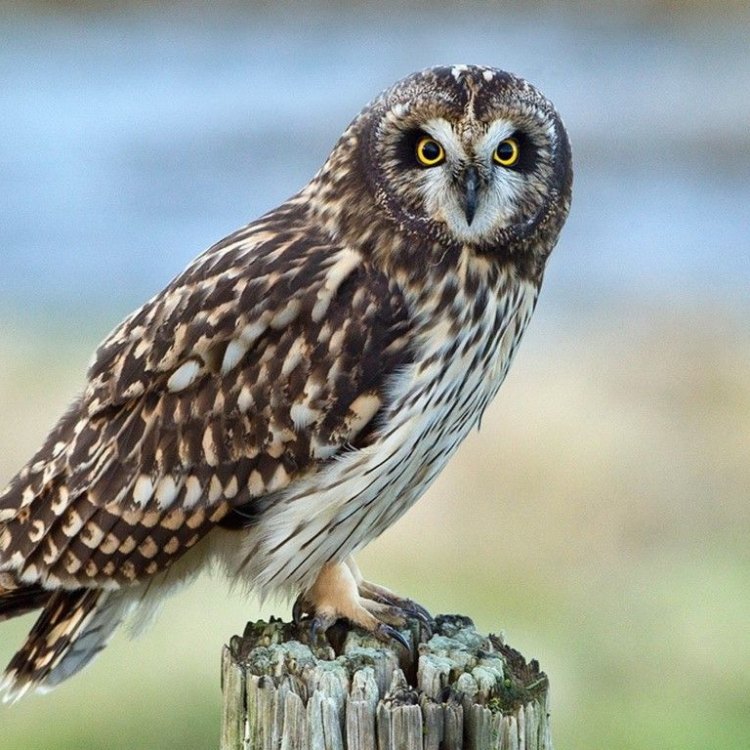
The Charming Short-Eared Owl: A Master of the Grasslands
Disclaimer: The content provided is for informational purposes only. We cannot guarantee the accuracy of the information on this page 100%. All information provided here may change without prior notice.



